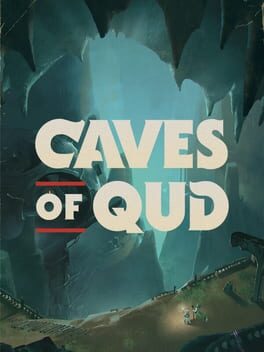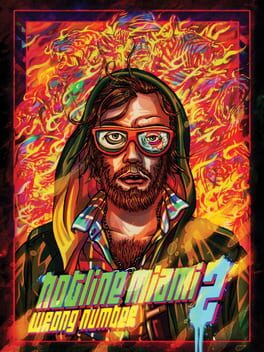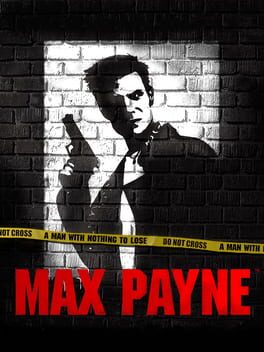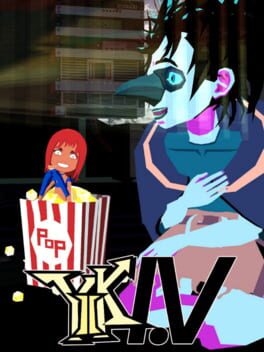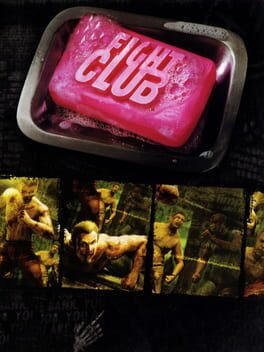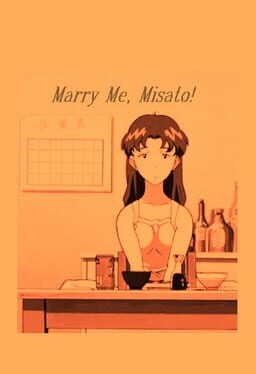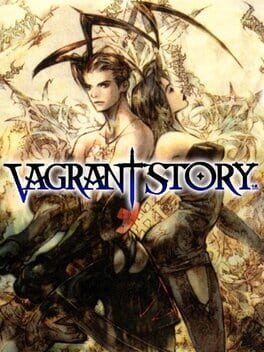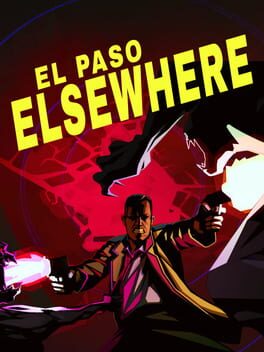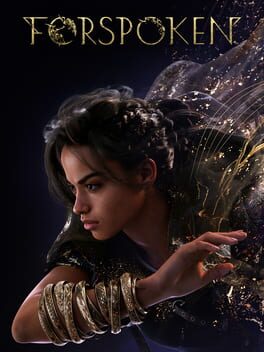SlimeLord
916 Reviews liked by SlimeLord
Caves of Qud
2015
Caves of Qud is a classic roguelike with a very creative and evocative world to explore. Some structural problems don't really stop the character customization and world building from carrying this game to a really incredible experience that I will be following for a long time.
The world-building here is amazing, especially considering it is very procedural, stringing together a Gamma World sort of environment with generated factions and communities for you to explore and discover. The consistent themes of self modification (through mutation or technology), discovery (from ancient technology to the local recipe for soup), and collaboration makes the world of Qud an amazing and evocative one to explore. This also leads to Praetorian death squads warping into the map and killing you instantly on occasion, which can feel bad. The unpredictable, dangerous, and weird bend of everything around you does serve to keep you on your toes despite some structural monotony you can run into.
Structurally it is similar in a lot of ways to Tales of Maj'eyal. There is an overworld that is static from seed to seed but a higher level of fidelity than ToME makes every piece of this world generated and explorable. This ends up giving you a specific goal that is always the same while the individual places you explore, creatures you meet, and items you find are different.
I found this static structure to be the biggest weakness of the game. Creating unique builds and characters is fun but the actual experience run to run ends up feeling very linear and samey. You will always progress to Grit Gate, Golgotha, and Bethesda Susa and the experience of each will be largely the same. Like ToME, the level-based danger of these areas means you will probably go through the same steps to surmount them as well making the beginning of the game feel like rote preparation for these challenges.
Creating your character in Qud is in-depth but made simpler by a bunch of premades that give varied experiences and work well. Broadly you are choosing between a mutant or a 'true-kin' (full human able to install cybernetics), and then specializing in a number of abilities, weapons, or attack types. It feels as cool to put together a 4-armed freak with a turtle shell who zaps people with super-charged static electricity as it does to roll around the world cobbling yourself into a cyborg death machine from discarded ancient technology. There are a few things that feel like traps or vestigial remnants of old development explorations, but the constant rate of updates to this game sees many things get phased out and replaced with interesting new toys.
Qud is a beautiful game, going a step beyond ascii to a character set that is evocative, expressive, and interesting. The color palette works especially well here. I love the muted colors that are still varied and used expertly to delineate different areas, creatures, and dangers.
Some size wonkiness and wildly swinging threat levels can make things play a bit badly on occasion. It is weird to see a crystalline structure the size of a mountain that takes up the same amount of space as a snapping turtle. It can be a bad experience when a guy that looks basically like most other wasteland guys you see kills you from across the map with a high-powered laser rifle.
The sometimes weird balance aside, playing Qud is an experience that isn't replicated in any other game. This is the Dwarf Fortress of classic roguelikes and has as much depth, interest, and fun as you would expect from that description. Freehold Games has created a classic here and I expect it to only get better as they continue to expand and refine it.
The world-building here is amazing, especially considering it is very procedural, stringing together a Gamma World sort of environment with generated factions and communities for you to explore and discover. The consistent themes of self modification (through mutation or technology), discovery (from ancient technology to the local recipe for soup), and collaboration makes the world of Qud an amazing and evocative one to explore. This also leads to Praetorian death squads warping into the map and killing you instantly on occasion, which can feel bad. The unpredictable, dangerous, and weird bend of everything around you does serve to keep you on your toes despite some structural monotony you can run into.
Structurally it is similar in a lot of ways to Tales of Maj'eyal. There is an overworld that is static from seed to seed but a higher level of fidelity than ToME makes every piece of this world generated and explorable. This ends up giving you a specific goal that is always the same while the individual places you explore, creatures you meet, and items you find are different.
I found this static structure to be the biggest weakness of the game. Creating unique builds and characters is fun but the actual experience run to run ends up feeling very linear and samey. You will always progress to Grit Gate, Golgotha, and Bethesda Susa and the experience of each will be largely the same. Like ToME, the level-based danger of these areas means you will probably go through the same steps to surmount them as well making the beginning of the game feel like rote preparation for these challenges.
Creating your character in Qud is in-depth but made simpler by a bunch of premades that give varied experiences and work well. Broadly you are choosing between a mutant or a 'true-kin' (full human able to install cybernetics), and then specializing in a number of abilities, weapons, or attack types. It feels as cool to put together a 4-armed freak with a turtle shell who zaps people with super-charged static electricity as it does to roll around the world cobbling yourself into a cyborg death machine from discarded ancient technology. There are a few things that feel like traps or vestigial remnants of old development explorations, but the constant rate of updates to this game sees many things get phased out and replaced with interesting new toys.
Qud is a beautiful game, going a step beyond ascii to a character set that is evocative, expressive, and interesting. The color palette works especially well here. I love the muted colors that are still varied and used expertly to delineate different areas, creatures, and dangers.
Some size wonkiness and wildly swinging threat levels can make things play a bit badly on occasion. It is weird to see a crystalline structure the size of a mountain that takes up the same amount of space as a snapping turtle. It can be a bad experience when a guy that looks basically like most other wasteland guys you see kills you from across the map with a high-powered laser rifle.
The sometimes weird balance aside, playing Qud is an experience that isn't replicated in any other game. This is the Dwarf Fortress of classic roguelikes and has as much depth, interest, and fun as you would expect from that description. Freehold Games has created a classic here and I expect it to only get better as they continue to expand and refine it.
While some find the level design to be a step back from 1, I disagree, the frustration it can add certainly creates tension, but in a way that benefits the games story and themes tenfold.
The story is both deeply layered, interesting, and proves its point in such a beautiful manner.
The Soundtrack is possibly one of the best in gaming, and the muddy grungy graphical style helps sell this bleak world incredibly.
One of, if not my favorite game of all time, certainly one of the most influential pieces of art I have experienced in my life.
The story is both deeply layered, interesting, and proves its point in such a beautiful manner.
The Soundtrack is possibly one of the best in gaming, and the muddy grungy graphical style helps sell this bleak world incredibly.
One of, if not my favorite game of all time, certainly one of the most influential pieces of art I have experienced in my life.
Max Payne
2001
In the back room of an apartment, I am cut loose from the city. It watches me pass with sharp neon eyes. The sun has gone down with practiced bravado, twilight crawled across the sky and laden with foreboding. The night has gilded the monitor in silver. Every pixel is covered with light. The image of one mean sonnuvabitch called “Max “Payne”, is repeated over and over. The Drug. The red and yellow of a beretta’s muzzle flashes fiercely on the white screen’s snow.
Something goes clank in the night, and the sound is close enough to remind me I’m playing Max Payne on a PlayStation 2 with a broken controller. Wanted to give the boys at Backloggd something to joke about.
Except no one’s laughing now.
The poindexters at IGN explained it to me:
“Remedy ported this PC code to the PS2 pretty quickly, and simply chopped up the levels into smaller bits in order to work around the 32 MBs of PS2 RAM.”
“The result is smaller levels, with more loading, slightly rearranged AI placement, but even worse is the heavy disruption to the flow and tension of the story, which tries desperately to feel like a movie, but instead feels like a TV show with hundreds of commercials shunt into it. It nearly ruins the experience.”
Thirty-two megabytes of RAM.
Poor kid never stood a chance.
Neither did I.
A couple of days ago it had all come crashing down. The bad PS2 games arrived like a winter storm: Monster Hunter 2. Devil May Cry 2. Sonic Heroes. The Bouncer. I’d been pushed over the edge by a cabal of games junkies who were ready to explode in random acts of senseless posting at any minute.
I found myself in the cold no-man's land between kamige and kusoge, no road signs on a crash course to a 3D Realms rush job with nothing to lose. I’d died to jank before. I could die to jank again.
A gunshot. My last meeting with Alex before Max found out what his old friend’s brains looked like splattered across a wall. I’d been writing a review in the style Max Payne’s dialogue while the loading bar crawled across the screen for mercy. Now I was awake, brought to my senses by the rapid fire of an AK alarm clock.
Buckshot pierces through me like a wind of rusted razor blades. I’m dead. Again. Two more minutes of dead-eyed disc-reading before I see Alex’s brains. Again. A console port purgatory I wouldn’t wish on my own worst enemy.
Drawing from my vape pen like Bogart, I enter the big house once more with the odds stacked against me. Third-person aiming in an early PlayStation 2 game was nigh-on impossible, and the gamepad’s joystick had been busted for a decade or more.
I could relate.
Game like this would’ve been a pixellated piece of cake in my younger years, a fresh-faced gamer on the sixteen-bit beat. But the strain of sleepless night after sleepless night spent on the graveyard shift with a chain gang of falling tetrominoes had shot my dexterity all the way to Hell. I was no pro gamer now.
My thirteenth gunfight of the night. Unlucky for some, and the way this one started didn't promise anything better than the last dozen. Bullets and bastards coming at my face, an army of dead men with only a few brain cells of artificial intelligence between them holding one-way tickets to the river Styx. I was trying to look for the answers, but every gunshot created a hole with more technical issues leaking out. A spreading labyrinth of questions and QA tickets spreading like a pool of blood on the snow at six frames a second.
Somewhere in the background of the game-goon banter and stock explosion sound effects, I heard the end howling after me. Polygonal hatchet men sped by on fast forward, rooftop water towers disappearing in 240p darkness, a dead forest of antennas and chimneys, all a blur beyond the draw distance. Another level come to a merciful end.
They were all dead. The final gunshot was an exclamation mark to everything that had led to this point. I released my finger from the plastic trigger, and then it was over.
Something goes clank in the night, and the sound is close enough to remind me I’m playing Max Payne on a PlayStation 2 with a broken controller. Wanted to give the boys at Backloggd something to joke about.
Except no one’s laughing now.
The poindexters at IGN explained it to me:
“Remedy ported this PC code to the PS2 pretty quickly, and simply chopped up the levels into smaller bits in order to work around the 32 MBs of PS2 RAM.”
“The result is smaller levels, with more loading, slightly rearranged AI placement, but even worse is the heavy disruption to the flow and tension of the story, which tries desperately to feel like a movie, but instead feels like a TV show with hundreds of commercials shunt into it. It nearly ruins the experience.”
Thirty-two megabytes of RAM.
Poor kid never stood a chance.
Neither did I.
A couple of days ago it had all come crashing down. The bad PS2 games arrived like a winter storm: Monster Hunter 2. Devil May Cry 2. Sonic Heroes. The Bouncer. I’d been pushed over the edge by a cabal of games junkies who were ready to explode in random acts of senseless posting at any minute.
I found myself in the cold no-man's land between kamige and kusoge, no road signs on a crash course to a 3D Realms rush job with nothing to lose. I’d died to jank before. I could die to jank again.
A gunshot. My last meeting with Alex before Max found out what his old friend’s brains looked like splattered across a wall. I’d been writing a review in the style Max Payne’s dialogue while the loading bar crawled across the screen for mercy. Now I was awake, brought to my senses by the rapid fire of an AK alarm clock.
Buckshot pierces through me like a wind of rusted razor blades. I’m dead. Again. Two more minutes of dead-eyed disc-reading before I see Alex’s brains. Again. A console port purgatory I wouldn’t wish on my own worst enemy.
Drawing from my vape pen like Bogart, I enter the big house once more with the odds stacked against me. Third-person aiming in an early PlayStation 2 game was nigh-on impossible, and the gamepad’s joystick had been busted for a decade or more.
I could relate.
Game like this would’ve been a pixellated piece of cake in my younger years, a fresh-faced gamer on the sixteen-bit beat. But the strain of sleepless night after sleepless night spent on the graveyard shift with a chain gang of falling tetrominoes had shot my dexterity all the way to Hell. I was no pro gamer now.
My thirteenth gunfight of the night. Unlucky for some, and the way this one started didn't promise anything better than the last dozen. Bullets and bastards coming at my face, an army of dead men with only a few brain cells of artificial intelligence between them holding one-way tickets to the river Styx. I was trying to look for the answers, but every gunshot created a hole with more technical issues leaking out. A spreading labyrinth of questions and QA tickets spreading like a pool of blood on the snow at six frames a second.
Somewhere in the background of the game-goon banter and stock explosion sound effects, I heard the end howling after me. Polygonal hatchet men sped by on fast forward, rooftop water towers disappearing in 240p darkness, a dead forest of antennas and chimneys, all a blur beyond the draw distance. Another level come to a merciful end.
They were all dead. The final gunshot was an exclamation mark to everything that had led to this point. I released my finger from the plastic trigger, and then it was over.
YIIK: I.V
TBD
I figured I'd review the demo since I already laid out my thoughts on the original game (which you can read here.). I won't be giving a score for it, seeing as the full update isn't out yet, but from what Ackk Studios have shown so far with Nameless Psychosis, I've been pretty impressed. I have my doubts that this update will fix all of YIIK's problems, but at the very least I see this game becoming something that is fun to play.
The most immediate thing I noticed was the updated presentation. YIIK is doubling down on the weird imagery, now aided with more inventive camera angles. It still comes off as the developers trying way too hard to tell an abstract narrative, but I can at least appreciate what they're going for this time around. It's a notable improvement without veering too far away from their original art style. The UI also got a massive overhaul. What was once barren and a horrible slog to navigate, has now turned into something that I would describe as not only functional, but also imbued with much-needed character. This might sound like a back handed compliment, and in some respects it is, but I do appreciate the effort they put in reworking the UI. The only thing I wasn't a fan of was the new opening sequence. The visuals are fine, but the musical choice doesn't compliment the editing and it creates a disconnect. It seems like they were trying to recreate an anime opening, but they should have probably opted for a more energetic song than the one they ended up going with.
On the subject of music, Nameless Psychosis features some new tracks and I dig them quite a bit. The menu theme was the stand out track to me, going for a lounge type song that for some reason reminds me of The Cardigans. Maybe it's the lead singer that heavily reminds me of the Swedish pop group. The new tracks are much more subdued compared to the game's original tracks, which I think works in YIIK's benefit. They also seem to be more thematically consistent, instead of the "try out whatever the fuck we want" approach the original game went for.
The biggest upgrade that YIIK received in the demo is easily the combat. Gone are the days of having to play the most frustrating mini-games only to do minuscule amounts of damage. Instead, we get the Karta system. Characters now work with three card slots in which they can equip unique cards that give them battle abilities, stats and passive abilities. They also act as a shield from damage, and once they've been destroyed you'll eventually start taking regular damage. Once you get it with an attack with no more cards, you will enter a bleed state, where you begin to lose health as a battle progresses. The Karta system feels like a direct response to the criticism that the original combat system was incredibly slow and tenuous, and it at the very least makes combat much faster and more engaging. I worry that the system can become a bit overwhelming, as I don't think I had fully grasped it by the time I was done with the demo, but I at least came out of it much more positively. There's also the issue of readability when in the bleed state, as it was hard to figure out when your health would tick a point of HP or not. Hopefully they improve on this aspect of the combat, and if they do, they might have something special on their hands.
If there's anything that I wasn't sold on is the story. Many of the issues I had with the original story are still present here, with an added layer of abstract story telling. They seem to be setting something up with Rory's sister, possibly hinting that foul play was a foot, but the way it's been told is so far isn't winning me over. Alex is still the same, overly verbose and long-winded character that he was in the original, but this time they use a framing device when he's monologuing, having him essentially do so on a stand-up stage. I see this as both reinforcing the fact that he is this self-centered character, as he literally becomes the center of attention, as well as adding some visual flare to when he just rambles on and on. I feel this was a misguided attempt at conveying this idea to the player, but they do use these moments to deliver some genuine laughs (at least I think that's what they're doing). They seem to be leaning more into the fact that Alex has become a giant meme online, which does do a decent job at conveying that we probably shouldn't be taking him so seriously all the time.
I liked what I played, but I'm not entirely convinced that this will be the update that radically changes the perception of the game, at least from a story telling perspective. At most, I think this will be the best version of this story. Maybe I'm wrong, and the new story updates will blow me away and will dramatically change the quality of the story, but I'm somewhat doubtful of that. At least the game is fun to play this time around, which is already a massive improvement over the original.
The most immediate thing I noticed was the updated presentation. YIIK is doubling down on the weird imagery, now aided with more inventive camera angles. It still comes off as the developers trying way too hard to tell an abstract narrative, but I can at least appreciate what they're going for this time around. It's a notable improvement without veering too far away from their original art style. The UI also got a massive overhaul. What was once barren and a horrible slog to navigate, has now turned into something that I would describe as not only functional, but also imbued with much-needed character. This might sound like a back handed compliment, and in some respects it is, but I do appreciate the effort they put in reworking the UI. The only thing I wasn't a fan of was the new opening sequence. The visuals are fine, but the musical choice doesn't compliment the editing and it creates a disconnect. It seems like they were trying to recreate an anime opening, but they should have probably opted for a more energetic song than the one they ended up going with.
On the subject of music, Nameless Psychosis features some new tracks and I dig them quite a bit. The menu theme was the stand out track to me, going for a lounge type song that for some reason reminds me of The Cardigans. Maybe it's the lead singer that heavily reminds me of the Swedish pop group. The new tracks are much more subdued compared to the game's original tracks, which I think works in YIIK's benefit. They also seem to be more thematically consistent, instead of the "try out whatever the fuck we want" approach the original game went for.
The biggest upgrade that YIIK received in the demo is easily the combat. Gone are the days of having to play the most frustrating mini-games only to do minuscule amounts of damage. Instead, we get the Karta system. Characters now work with three card slots in which they can equip unique cards that give them battle abilities, stats and passive abilities. They also act as a shield from damage, and once they've been destroyed you'll eventually start taking regular damage. Once you get it with an attack with no more cards, you will enter a bleed state, where you begin to lose health as a battle progresses. The Karta system feels like a direct response to the criticism that the original combat system was incredibly slow and tenuous, and it at the very least makes combat much faster and more engaging. I worry that the system can become a bit overwhelming, as I don't think I had fully grasped it by the time I was done with the demo, but I at least came out of it much more positively. There's also the issue of readability when in the bleed state, as it was hard to figure out when your health would tick a point of HP or not. Hopefully they improve on this aspect of the combat, and if they do, they might have something special on their hands.
If there's anything that I wasn't sold on is the story. Many of the issues I had with the original story are still present here, with an added layer of abstract story telling. They seem to be setting something up with Rory's sister, possibly hinting that foul play was a foot, but the way it's been told is so far isn't winning me over. Alex is still the same, overly verbose and long-winded character that he was in the original, but this time they use a framing device when he's monologuing, having him essentially do so on a stand-up stage. I see this as both reinforcing the fact that he is this self-centered character, as he literally becomes the center of attention, as well as adding some visual flare to when he just rambles on and on. I feel this was a misguided attempt at conveying this idea to the player, but they do use these moments to deliver some genuine laughs (at least I think that's what they're doing). They seem to be leaning more into the fact that Alex has become a giant meme online, which does do a decent job at conveying that we probably shouldn't be taking him so seriously all the time.
I liked what I played, but I'm not entirely convinced that this will be the update that radically changes the perception of the game, at least from a story telling perspective. At most, I think this will be the best version of this story. Maybe I'm wrong, and the new story updates will blow me away and will dramatically change the quality of the story, but I'm somewhat doubtful of that. At least the game is fun to play this time around, which is already a massive improvement over the original.
Max Payne
2001
"After Y2K, the End of the World had become a cliché. But who was I to talk? A brooding underdog avenger alone against an empire of evil, out to right a grave injustice? Everything was subjective. There were no personal apocalypses. Nothing is a cliché when it's happening to you."
In Max Payne, New York City comes first. We have a few moments just with the city, and the chatter of police scanners cutting through the howling snowstorm, before Max hits us with one of his characteristic delightfully purple parodic noir metaphor.
This might not seem worth noting, given what a tiny slice of the game it is, but I think it's important in the context of how the rest of the game's narrative is portrayed (mostly from Max's narration) and from the rest of Remedy's games that followed in Max Payne's lineage. Control, Quantum Break, and Alan Wake all open with their protagonists and their narration before the world, giving the player no time to form an impression of it outside the lens of our central character. Alan Wake offers the greatest window of time for this at a whopping two seconds before he starts banging on about Stephen King. So Max Payne giving us about a minute of time in snow-covered New York feels almost luxurious in comparison. And then Max Payne barges in, bringing Helheim with him.
I spend so much time pointing this out because any attempt to talk about what Max Payne is doing on any level below the surface makes one sound like a particularly unhinged conspiracy theorist, something that Remedy are explicitly aware of and has playfully prodded at in their future game Control in particular. Part of this is the conscious silliness of the surface-level: comic-sans narration boxes filled with prose so purple it can make fine wine, and, of course, the way the entire story is told through delightful school-play images made from the developers and their friends and family putting on ill-fitting outfits and making silly faces. There is a pervasive charm to all of this that invites luxuriating in it, but I think a common mistake one can make when reading any work is to simply assume that something is thoughtless because it's a bit silly. Remedy was not somehow unaware of the fact that they were a bunch of nerds and their relations playing dress-up, and indeed, lean into it.
The archness, the artifice, and the absolute over-the-top-ness of it all, evokes the tropes and styles it is pulling from so bluntly that it becomes solid in the mind, manifesting into a brick thrown at your face that then falls into your lap, remaining there and weighing on you, never letting you forget what it's doing. From the comic panels, to the tvs throughout the levels playing broad parodies of soap operas, Twin Peaks, and, uh, The News, to Max Payne himself, as he intrudes upon the serenity of New York at the beginning, a noir cliche diving in through the door from one of the better issues of Frank Miller's Sin City (the comic panels and narration and image of a city in white bearing greater similarity to those comics than anything starring Philip Marlowe) and leaving reality covered with bullet holes in his wake.
But here's the thing. He doesn't close the door behind him. And slowly, other things start to creep in.
A superhero with a baseball bat climbs out of a comic strip and into the head of a mob torturer who is a fan of the comic. The apocalyptic snowstorm that blankets the city of New York, and the pervasive Norse Mythology references that litter the game, crawl out of a book about Ragnarok being read by someone in the club Ragna Rock. Max's actions are fed into a news cycle that makes entertainment out of it. The game's genre references become recursive and circular, wrapping in on themselves over and over. Max becomes aware of his own status as a loose cannon cop out for revenge. Mobsters make themselves into occult monstrosities in order to survive. People write fiction. Fiction crawls into peoples' heads, influences them, and through them, the world. And then people carry those ideas back into fiction. People imposing on fiction, fiction imposing on the world. On and on it goes.
It is an imposition the player performs as well. I can't bring too much to the table in terms of the mechanical construction of Max Payne's fantastic moment-to-moment gunplay, as in many ways, the sheer joy of diving in slow-motion through a doorway and riddling an entire room of goons yelling "PAYNE!" full of holes simply speaks for itself with more wit than I could ever manage. However, one thing I do want to mention is something has, to a certain extent, been obscured by successive ports to consoles and phones and back to the PC. Max Payne was a PC game first and, I think, foremost, and understanding this is key to understanding how the game handles checkpoints, or, to be more accurate, how the game doesn't. Autosave points are extremely few and far between, and most deaths will take you back to the start of the level, and these deaths come quickly and mercilessly, with only a single mistake standing between Max and the grave eagerly awaiting him.
Of course, the game does not actually expect you to restart from the beginning of each level every single time. The game expects - an assumption that was reasonable given that this behavior was ubiquitous across Max Payne's contemporaries on the platform - for you to manually save the game and create your own checkpoints from which Max can resume his story after his next future full stop. This seemingly innocuous feature might be the game's cleverest ludic move, as together with fast deaths and often-scarce painkillers demanding a certain degree of trial-and-error perfectionism, the player is put into the role of director, cutting the action when they are satisfied with the scene as it played out. It is a system that imposes storytelling structure onto every aspect of play, including even the act of entering the pause screen to save and reload into its all-consuming storyboard.
On every level of it's construction, Max Payne is a game about stories insinuating themselves, loudly and quietly, into the real, and it's surprising to find the DNA that runs through Alan Wake, Quantum Break, and Control already fully-formed in (Death Rally aside) the studio's debut title, arguably more deftly and charismatically than any of those later works would manage. The strength of Max Payne is that unlike, say, Alan Wake, all of this is left to crawl around the periphery, only bubbling up very occasionally, allowing the player to put together the disparate images in their head, like a detective attempting to solve a mystery by staring at connected pins on a bulletin board. Indeed, I don't know if I would have the confidence to make this read if not for Remedy's future work pulling on all this stuff much more explicitly. Max comments on some stuff, but not all, and one of the most compelling images the game has to offer eludes his notice completely.
Late in the game, Max is recruited by a shadowy illuminati-like organization known as the Inner Circle, and learns that pretty much everything in the plot stems from their influence, and in particular, from one of their number who manufactured the US Military super-soldier drug that drives the game's plot: Valkyr. In his own piece on the game, critic Noah Gervais explains Valkyr, the hilariously cartoonish green goop drug that has it's origins in a military super-soldier project, as a kind of uniquely video-game pulp that bleeds in from what was typical for video games in that moment, and I would say that is fairly accurate. Where I deviate from Gervais is that he finds Valkyr to be a kind of ancillary element, something that emerges out of the video game milieu of the time rather than an intentional element, and that is where I disagree. Valkyr is a consciously artificial video game trope that begins this video game, in the same way that Max's dead family is a consciously Noir trope that begins this Noir story, created by a US military project run by a member of a secret organization who's headquarters is draped in conspicuous US historical ephemera, from the room looking like the briefing room of the White House, to the Washington Monument replica at the center of it all.
There was something disturbingly familiar about the letter before me, the handwriting was all pretty curves.
"You are in an American world, Max."
The truth was a burning green crack through my brain. The film noir aesthetic, the American comic influence, even the bullet-time mechanics derived from a filmmaker who, contemporaneously, was being consumed by the Hollywood machine making strange twists on the Hong Kong action films he so excelled at.
I was in a cultural world shaped by the hegemonic influence of American fiction. Funny as hell, it was the most horrible thing I could think of.
Everything after this point, after this moment, is perfunctory. The point is made, the statement is said. As Max would put it, the final gunshot is merely the exclamation mark to everything that led to this point. He fulfills his duties to the game and the genre strangely quietly, defeats the villain, and is taken away in the back of the car, knowing exactly what has, what is, and what will happen.
He releases his finger from the trigger, and then it is over.
Until you start again.
Try Hard Boiled mode or New York Minute mode for the next challenge!
In Max Payne, New York City comes first. We have a few moments just with the city, and the chatter of police scanners cutting through the howling snowstorm, before Max hits us with one of his characteristic delightfully purple parodic noir metaphor.
This might not seem worth noting, given what a tiny slice of the game it is, but I think it's important in the context of how the rest of the game's narrative is portrayed (mostly from Max's narration) and from the rest of Remedy's games that followed in Max Payne's lineage. Control, Quantum Break, and Alan Wake all open with their protagonists and their narration before the world, giving the player no time to form an impression of it outside the lens of our central character. Alan Wake offers the greatest window of time for this at a whopping two seconds before he starts banging on about Stephen King. So Max Payne giving us about a minute of time in snow-covered New York feels almost luxurious in comparison. And then Max Payne barges in, bringing Helheim with him.
I spend so much time pointing this out because any attempt to talk about what Max Payne is doing on any level below the surface makes one sound like a particularly unhinged conspiracy theorist, something that Remedy are explicitly aware of and has playfully prodded at in their future game Control in particular. Part of this is the conscious silliness of the surface-level: comic-sans narration boxes filled with prose so purple it can make fine wine, and, of course, the way the entire story is told through delightful school-play images made from the developers and their friends and family putting on ill-fitting outfits and making silly faces. There is a pervasive charm to all of this that invites luxuriating in it, but I think a common mistake one can make when reading any work is to simply assume that something is thoughtless because it's a bit silly. Remedy was not somehow unaware of the fact that they were a bunch of nerds and their relations playing dress-up, and indeed, lean into it.
The archness, the artifice, and the absolute over-the-top-ness of it all, evokes the tropes and styles it is pulling from so bluntly that it becomes solid in the mind, manifesting into a brick thrown at your face that then falls into your lap, remaining there and weighing on you, never letting you forget what it's doing. From the comic panels, to the tvs throughout the levels playing broad parodies of soap operas, Twin Peaks, and, uh, The News, to Max Payne himself, as he intrudes upon the serenity of New York at the beginning, a noir cliche diving in through the door from one of the better issues of Frank Miller's Sin City (the comic panels and narration and image of a city in white bearing greater similarity to those comics than anything starring Philip Marlowe) and leaving reality covered with bullet holes in his wake.
But here's the thing. He doesn't close the door behind him. And slowly, other things start to creep in.
A superhero with a baseball bat climbs out of a comic strip and into the head of a mob torturer who is a fan of the comic. The apocalyptic snowstorm that blankets the city of New York, and the pervasive Norse Mythology references that litter the game, crawl out of a book about Ragnarok being read by someone in the club Ragna Rock. Max's actions are fed into a news cycle that makes entertainment out of it. The game's genre references become recursive and circular, wrapping in on themselves over and over. Max becomes aware of his own status as a loose cannon cop out for revenge. Mobsters make themselves into occult monstrosities in order to survive. People write fiction. Fiction crawls into peoples' heads, influences them, and through them, the world. And then people carry those ideas back into fiction. People imposing on fiction, fiction imposing on the world. On and on it goes.
It is an imposition the player performs as well. I can't bring too much to the table in terms of the mechanical construction of Max Payne's fantastic moment-to-moment gunplay, as in many ways, the sheer joy of diving in slow-motion through a doorway and riddling an entire room of goons yelling "PAYNE!" full of holes simply speaks for itself with more wit than I could ever manage. However, one thing I do want to mention is something has, to a certain extent, been obscured by successive ports to consoles and phones and back to the PC. Max Payne was a PC game first and, I think, foremost, and understanding this is key to understanding how the game handles checkpoints, or, to be more accurate, how the game doesn't. Autosave points are extremely few and far between, and most deaths will take you back to the start of the level, and these deaths come quickly and mercilessly, with only a single mistake standing between Max and the grave eagerly awaiting him.
Of course, the game does not actually expect you to restart from the beginning of each level every single time. The game expects - an assumption that was reasonable given that this behavior was ubiquitous across Max Payne's contemporaries on the platform - for you to manually save the game and create your own checkpoints from which Max can resume his story after his next future full stop. This seemingly innocuous feature might be the game's cleverest ludic move, as together with fast deaths and often-scarce painkillers demanding a certain degree of trial-and-error perfectionism, the player is put into the role of director, cutting the action when they are satisfied with the scene as it played out. It is a system that imposes storytelling structure onto every aspect of play, including even the act of entering the pause screen to save and reload into its all-consuming storyboard.
On every level of it's construction, Max Payne is a game about stories insinuating themselves, loudly and quietly, into the real, and it's surprising to find the DNA that runs through Alan Wake, Quantum Break, and Control already fully-formed in (Death Rally aside) the studio's debut title, arguably more deftly and charismatically than any of those later works would manage. The strength of Max Payne is that unlike, say, Alan Wake, all of this is left to crawl around the periphery, only bubbling up very occasionally, allowing the player to put together the disparate images in their head, like a detective attempting to solve a mystery by staring at connected pins on a bulletin board. Indeed, I don't know if I would have the confidence to make this read if not for Remedy's future work pulling on all this stuff much more explicitly. Max comments on some stuff, but not all, and one of the most compelling images the game has to offer eludes his notice completely.
Late in the game, Max is recruited by a shadowy illuminati-like organization known as the Inner Circle, and learns that pretty much everything in the plot stems from their influence, and in particular, from one of their number who manufactured the US Military super-soldier drug that drives the game's plot: Valkyr. In his own piece on the game, critic Noah Gervais explains Valkyr, the hilariously cartoonish green goop drug that has it's origins in a military super-soldier project, as a kind of uniquely video-game pulp that bleeds in from what was typical for video games in that moment, and I would say that is fairly accurate. Where I deviate from Gervais is that he finds Valkyr to be a kind of ancillary element, something that emerges out of the video game milieu of the time rather than an intentional element, and that is where I disagree. Valkyr is a consciously artificial video game trope that begins this video game, in the same way that Max's dead family is a consciously Noir trope that begins this Noir story, created by a US military project run by a member of a secret organization who's headquarters is draped in conspicuous US historical ephemera, from the room looking like the briefing room of the White House, to the Washington Monument replica at the center of it all.
There was something disturbingly familiar about the letter before me, the handwriting was all pretty curves.
"You are in an American world, Max."
The truth was a burning green crack through my brain. The film noir aesthetic, the American comic influence, even the bullet-time mechanics derived from a filmmaker who, contemporaneously, was being consumed by the Hollywood machine making strange twists on the Hong Kong action films he so excelled at.
I was in a cultural world shaped by the hegemonic influence of American fiction. Funny as hell, it was the most horrible thing I could think of.
Everything after this point, after this moment, is perfunctory. The point is made, the statement is said. As Max would put it, the final gunshot is merely the exclamation mark to everything that led to this point. He fulfills his duties to the game and the genre strangely quietly, defeats the villain, and is taken away in the back of the car, knowing exactly what has, what is, and what will happen.
He releases his finger from the trigger, and then it is over.
Until you start again.
Try Hard Boiled mode or New York Minute mode for the next challenge!
YIIK: I.V
TBD
Demo impressions:
Obviously way better than the original. Cool cutscene direction and some occasionally cool shit in here but it's still ultimately YIIK. New battle system is interesting but I could imagine it being more shallow than it looks. Feels like it's trying too hard to be something like Killer7 at points. Overall giving a quizzical eyebrow raise out of ten. I could imagine the full game being good.
Obviously way better than the original. Cool cutscene direction and some occasionally cool shit in here but it's still ultimately YIIK. New battle system is interesting but I could imagine it being more shallow than it looks. Feels like it's trying too hard to be something like Killer7 at points. Overall giving a quizzical eyebrow raise out of ten. I could imagine the full game being good.
Heaven Studio
2024
Fight Club
2004
This is your daily reminder that Limp Bizkit actually kicked ass and both Significant Other and Chocolate Starfish are rock solid nu metal albums with plenty of great songs on them and the only reason there was such a backlash to them in particular was annoying white boy fans and them releasing their most obnoxious songs as singles. Fred Durst is unironically one of the greatest frontmen of any metal band ever, man's energy and weird charisma was unmatched.
Anyway, this game? Absolute dogshit. Never play it. It's not even a funny kind of bad.
Anyway, this game? Absolute dogshit. Never play it. It's not even a funny kind of bad.
